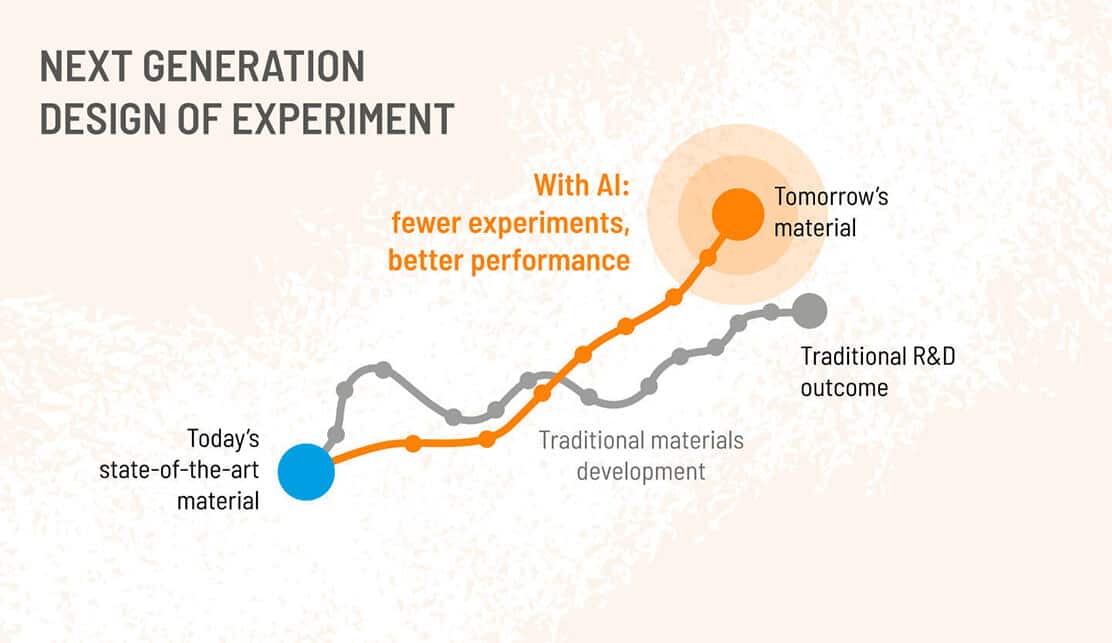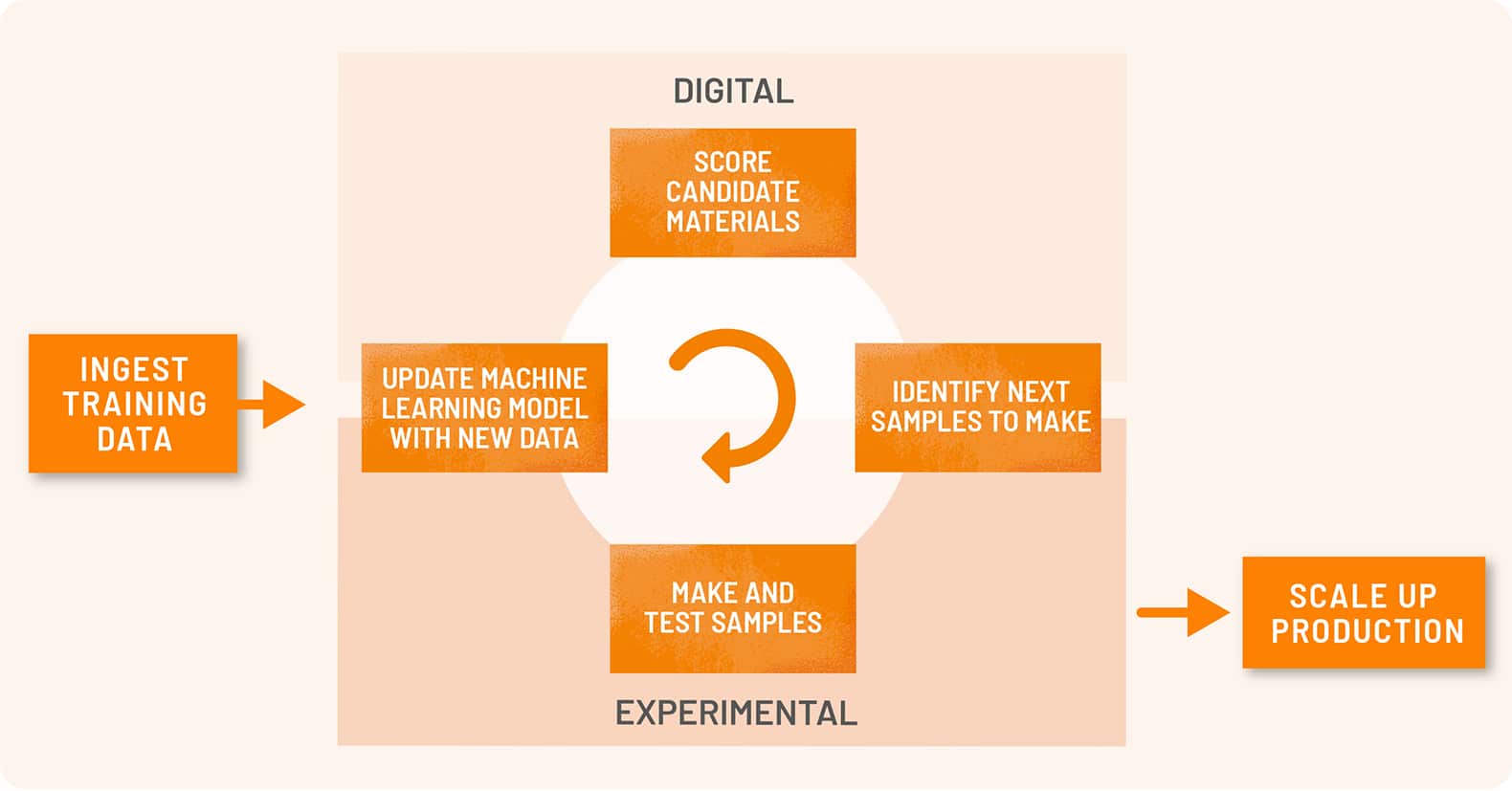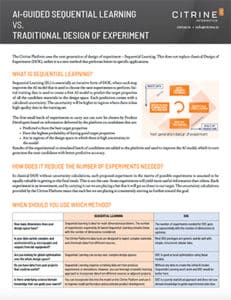Design of Experiments and Machine Learning
Which method uses the fewest experiments?

Citrine has seen a 50%-90% reduction in the number of experiments needed to reach target performance.
The traditional approach to materials and chemicals research uses a combination of scientific intuition and design of experiments (DOE) methods to choose which experiments to carry out next. When carrying out a grid of experiments, each experiment is equally likely to succeed or fail. When you use AI to predict the properties of materials, you also get an estimation of the predictions uncertainty. Some candidate experiments will be sure bets and other more exploratory. Researchers are presented a ranked list of experiments and their likelihood of success and can therefore be more strategic about what they take to the lab next. It’s this extra information that means that fewer experiments are needed to hit target properties. In both cases, resource-intensive experiments are needed to validate results. In the case of AI, each new experiment is fed back in and makes the AI more accurate.
What Is Sequential Learning?
Sequential Learning (SL) is an iterative, AI-guided R&D methodology where each experiment<>modeling loop improves the AI model that is used to help select the next batch of experiments to perform.
The AI model identifies promising candidates to synthesize and test in each round. Including uncertainty in each prediction is critical to get the most value out of this approach.

Uncertainty is calculated for each prediction to help scientists understand:
- the likelihood of achieving target properties
- the number of candidates that could achieve particular properties
- which areas of the output space the AI model is still uncertain about
This additional information is used to suggest the next batch of experiments. It is these new insights that reduce the number of experiments needed to reach performance targets.
